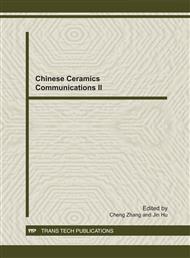p.1
p.5
p.9
p.13
p.17
p.21
p.25
p.32
Hydrogen Fluoride Adsorption Ability of some Inorganic Compounds
Abstract:
Based on the traditional method of adsorption of the hydrogen fluoride, we mainly selected some typical inorganic compounds α-Al2O3, γ-Al2O3, CaF2 and NaF as the adsorbents, studied and discussed the effect of their adsorption ability of the hydrogen fluoride gas. Comprehensive comparison showed that NaF was the best adsorbent for hydrogen fluoride gas. Meanwhile, as the raw materials for the production of hydrogen fluoride gas, CaF2 was also used as an adsorbent, and the measurement showed that CaF2 has barely adsorption ability for hydrogen fluoride gas. Using the electronic analytical balance and fourier transform infrared spectroscopy, the absorption efficacy of different inorganic compounds with equal quality for the same amount of hydrogen fluoride gas was analyzed and characterized.
Info:
Periodical:
Pages:
1-4
Citation:
Online since:
November 2011
Authors:
Keywords:
Price:
Сopyright:
© 2012 Trans Tech Publications Ltd. All Rights Reserved
Share:
Citation:


